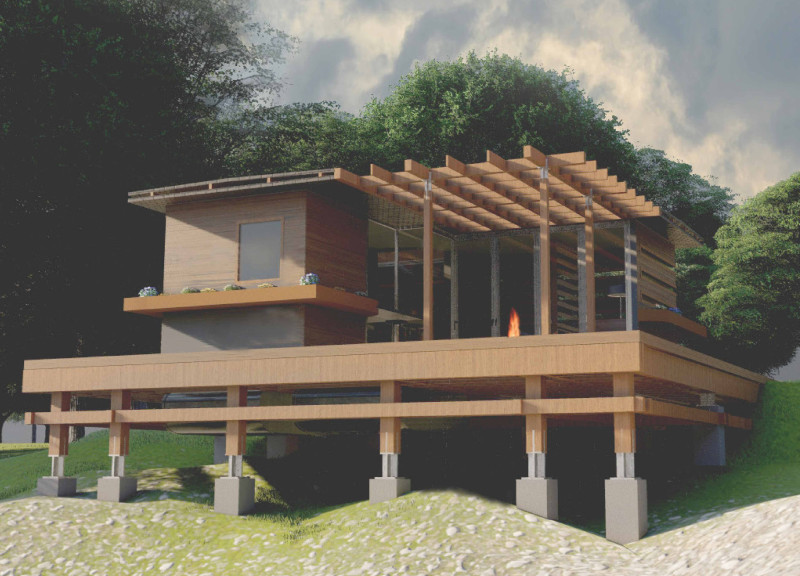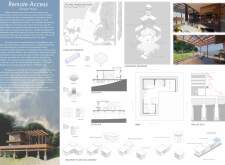5 key facts about this project
Modular Design Approach
The design of the Remote Access Compact House employs a modular approach, essential for its flexibility and adaptability. The structure is organized on a 3x3 grid, allowing for easy assembly and customization to accommodate different family sizes and lifestyles. Each module serves distinct functions, including a living space, bedroom, and kitchen, while maintaining a clear flow between them. Large windows and sliding doors are integrated to foster a connection between indoor and outdoor environments, enhancing natural light and views. This adaptability extends to the exterior, where vertical gardens and overhangs contribute to both aesthetic and functional qualities.
Sustainability and Resource Efficiency
The project places a strong emphasis on sustainability and resource efficiency. Photovoltaic panels are utilized to generate renewable energy, aiming for energy self-sufficiency. Additionally, a rainwater harvesting system is integrated into the design, enhancing water management capabilities and contributing to the overall sustainability goals. The choice of materials, including sustainable wood and durable composite materials, reflects a commitment to reducing the ecological footprint during construction while supporting longevity in the building design.
To gain a deeper understanding of the architectural plans, sections, and overall design aspects of this project, readers are encouraged to explore further details in the project presentation. By examining the architectural ideas and design strategies employed, one can appreciate the careful consideration given to both form and function.























